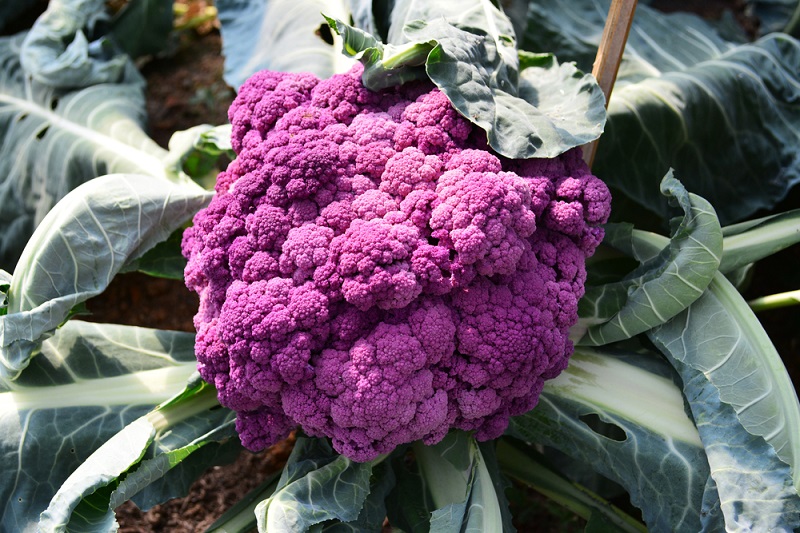What may seem like a small issue with cauliflower turning purple is the result of an entire plant species being found to have this trait. Learn more about this in this article!
What’s Causing Cauliflower to Change Color?
Causing cauliflower to change color is typically due to exposure to sunlight or water. When cauliflower is exposed to sunlight, the chlorophyll in its cells breaks down, turning the vegetable a pale yellow or green. When cauliflower is submerged in water, excess salt can cause it to turn an unappetizing brown or black.
The Cause of the Purple Cauliflower
There is no one answer to why cauliflower is turning purple. Some potential causes could be environmental, genetic, or metabolic. A few possible explanations for why cauliflower is turning purple include:
- The use of artificial fertilizers that contain high levels of nitrogen can cause plants to turn purple as they try to make their leaves and flowers green again. Nitrogen is a key component of the nutrients that plants need to grow, so when it’s overused, plants can take on a purple color as they scramble to get their bodies in balance.
- Similarly, high levels of phosphorus can cause plants to take on a purplish hue. Phosphorus is essential for plant growth, but it can also be damaging if it’s present in too high a concentration. This is why it’s important to keep your soil balanced and check the ingredients of any fertilizers you use to make sure they don’t have too much phosphorus.
- Another potential reason for cauliflower’s purple coloration could be fluctuations in water availability or pH levels. When these conditions aren’t ideal, the plant may turn towards using its stored energy (phosphorus) to convert other elements in the soil. To keep cauliflower’s coloration in check, you can amend your soil with compost before planting to add organic matter and help it achieve a more balanced pH level.
- If the temperatures are too high or too low, the cauliflower may turn purple as a result of a lack of chlorophyll. As this element is needed for photosynthesis, your cauliflower won’t develop its characteristic green leaves. If you think your cauliflower might have turned purple because it’s not getting enough sunlight, you can help it by planting it in an area with more light or providing an extra light source from another source.
- The weather conditions can also influence the cauliflower’s coloration, especially if the temperatures and humidity are much lower than normal levels for the season. This is why it’s vital that you pay attention to weather reports before planting to ensure you’ll have optimal growing conditions for your plant.
Growing Purple Cauliflower
Are you growing purple cauliflower? If so, you’re not alone! This uncommon variety of cauliflower is becoming increasingly popular, but why? According to some gardeners, the reason behind the color change is simple: exposure to a certain type of light.
While the exact reason for this change remains unknown, some say that exposing cauliflower to light-emitting diodes (LEDs) or fluorescent lights can cause the plants’ leaves and flowers to turn different colors, including purple. So if you’ve been noticing your cauliflower turning a pretty purple hue lately, don’t worry – it’s likely not a sign of anything wrong with your plants. Just make sure to keep them well-lit while they’re growing!
Conclusion
There are many possible causes for cauliflower to change color, but the most likely culprit is an overwatering or over-fertilization problem. If you notice that your cauliflower is turning a different color than usual and is starting to grow brown patches, it’s time to take action and correct the problem before it gets worse. Overwatering can cause plants to release excess water in their leaves and stems, which can turn them into a dull orangish-brown color.
Meanwhile, over-fertilization with potassium can cause plants to accumulate too much of this mineral in their cells, causing them to turn yellow or green. Either of these problems will lead to wilting and distorted leaves and stem growth; if left unchecked, they will eventually kill the plant. To prevent this from happening on your cauliflower crop, make sure you water your plants sparingly during dry periods and fertilize only when necessary (using a low-potassium fertilizer).

